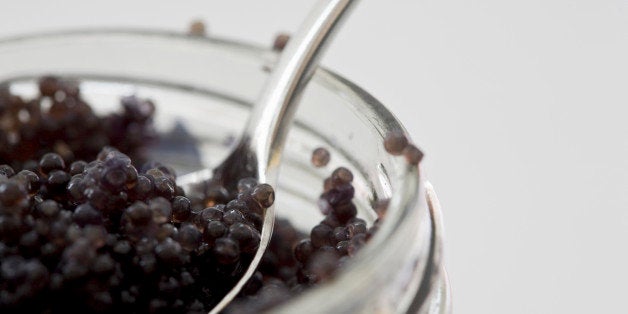
In 2010, the International Union for Conservation of Nature (IUCN) made a shocking announcement: In part due to humans' insatiable appetite for caviar, sturgeon had become the most critically endangered group of animals in the world, with 85 percent of the species at risk of extinction.
Pregnant sturgeon are typically killed before their eggs are harvested, and the fish does not reproduce annually, so it can take many years for populations to recover from a decline. To save the sturgeon from annihilation while also fulfilling the world's demand for more caviar, some sturgeon farmers have been adopting more sustainable, "no-kill" methods to get to the animal's precious roe.
One unlikely method is massage -- specifically, the gentle massaging of pregnant sturgeon. According to an NPR report this week, this bizarre method has been perfected by Vivace, a small farm in Loxstedt, Germany.
The massage method, NPR explains, "involves first viewing a sturgeon's eggs by ultrasound. If they are deemed ready, a signaling protein is administered to the sturgeon several days before the egg harvest." This protein is said to "induce labor," and the roe can subsequently be pumped out of the body with a gentle massage.
Angela Köhler, a marine biologist who has spent years working on perfecting this system, told the news outlet that this process can be repeated many times throughout a sturgeon's lifetime. "[The Vivace method] will make caviar production more financially reasonable," she said. "It doesn't make much sense to take a fish that needs seven or eight years to mature and then, when it has its first eggs, kill it."
Visit NPR to read the full report.
This isn't the first time that sustainable caviar has made headlines. In 2009, the Telegraph described how sturgeons' eggs are similarly massaged out of the creatures at Mottra, a "no-kill" caviar farm in Latvia. Other farms have also been known to use a more dangerous "caesarian section" method, which involves making a small cut in the female sturgeon to get her eggs.
Köhler and others in the "cruelty-free" caviar business believe that sustainable caviar could eventually catch on.
“It could take years, even decades,” Köhler told Civil Eats last month. “A system like we have takes a large investment. But [the no-kill techniques] make closed aquaculture for caviar production economically possible for the first time.”
Would you try "no-kill" caviar? Tell us below.